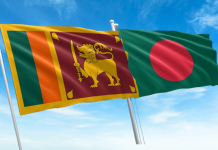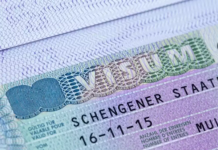Russia and China contributes immensely in pushing the tourist arrivals in the Asia Pacific region. “When it comes to the business of travel and tourism, Russian and Chinese travellers play a large role in shaping the landscape of travel and tourism in the Asia Pacific region. The aim of the workshop was to deliver a deeper understanding of the Chinese and Russian markets and provide our participants the practical tools and skills to increase their share of these highly lucrative segments,” Mario Hardy, CEO, PATA, said while delivering his speech at ‘China and Russia Outbound Tourism Markets’ at a workshop organized by PATA during two-day PATAcademy-HCD in Bangkok.
The interactive programme was led by Philip Schaetz, Managing Director – CUBE, Hong Kong SAR; Vadim Tylik, Chief Executive Officer – RMAA Group, Russia, and Vera Wong, Director of Sales & Marketing – Stargazer Company Limited, China.
The workshop enabled participants to leverage destination, consumer and competitor’ insights in order to create an effective destination marketing strategy from a 360-degree perspective. The workshop specifically focussed on the Chinese and Russian digital marketing landscape, social media platforms, future market trends, and how to attract them to your destination.
Attending the workshop were 12 participants from 5 destinations, representing 7 organisations from Malaysia, Nepal, Papua New Guinea, Thailand and the Solomon Islands.
On the first day of the workshop, Schaetz began with an introductory session on leveraging consumer insights to create an effective destination marketing strategy. “The delegates learned how to use consumer and market insights from a deep dive 360 degree perspective to drive effective destination marketing strategies,” said Mr. Schaetz. “It is always very rewarding to meet people from all these exciting places who just love to drive awareness about their destination to the world. Their passion is infectious!”
Wong from Stargazer, a destination marketing company in China that specialises in offering marketing and sales services to destinations, attractions and hotels, led a session on the Chinese outbound market. ” From my session, the participants learned a general picture of the Chinese marketing landscape and learned to understand OTAs, UGC, social media platforms and blogger marketing. This integrated understanding could help them to make smarter decisions for the Chinese market in the future,” she noted
On the second day of the programme, Tylik focussed on the Russian Federation, providing participants with statistics, analysis and trends of outbound tourism from the country. “During the last few years, I have been working closely with different destinations helping them to enter the Russian market. As a result of this activity, I got a lot of experience that I was able to share at the workshop. The first part of my presentation focussed on the Russian outbound tourism market as well as business trends and statistics. In the second part, I talked about tactics and strategies on how to win the hearts of Russian tourists and attract them to your destination,” said Tylik.
All told, 46% of the 245 origin markets (including ‘Others’) covered in this report had annual growth rates in excess of 10%, while 66% grew by five per cent or more between 2017 and 2018.
For the absolute volume increase between 2017 and 2018, the strongest source markets into Asia-Pacific were ranked as:
Interestingly, each of these top five origin markets are within the Asia-Pacific region. Intra-regional travel remains very strong.
Of the source markets covered in this report, 12 (about 5%) generated annual volume increases of more than one million each, while 20 (about 8%) produced more than half a million additional IVAs into Asia-Pacific between 2017 and 2018.
Early 2019 data for foreign arrivals into 37 Asia-Pacific destinations shows strong early performances from a number of destinations including:
While Europe’s Greece and Bulgaria both represent extra-regional increases into Asia-Pacific in early 2019 over early 2018, the remainder in this group are all from within Asia-Pacific.
While only two origin markets have so far added more than one million additional IVAs into Asia-Pacific between early 2018 and early 2019, just under 10% of these 232 markets had already generated more than 100,000 additional arrivals into the region over these periods. Included among these are:
PATA’s CEO Mario Hardy said: “Asia-Pacific is still the major generator of arrivals into Asia-Pacific, with Asia especially playing a lead role in that regard. Outside of Asia-Pacific, Europe is an important contributor, with both West and East Europe in particular, supplying significant numbers of additional arrivals in early 2019.”
“Nothing remains the same however and various tumultuous activities that are currently playing out globally and in the Asia-Pacific region will undoubtedly affect the origin and distribution of international arrivals by the end of the year.
“It remains imperative therefore that the international tourism sector remains agile and able to shift its marketing focus to areas of higher potential as these interventions peak and then ultimately fade. The provision of appropriate and timely intelligence as to what these areas of higher potential may be has never been more critical and could easily spell the difference between growth and contraction for players in this field and at this time.”













